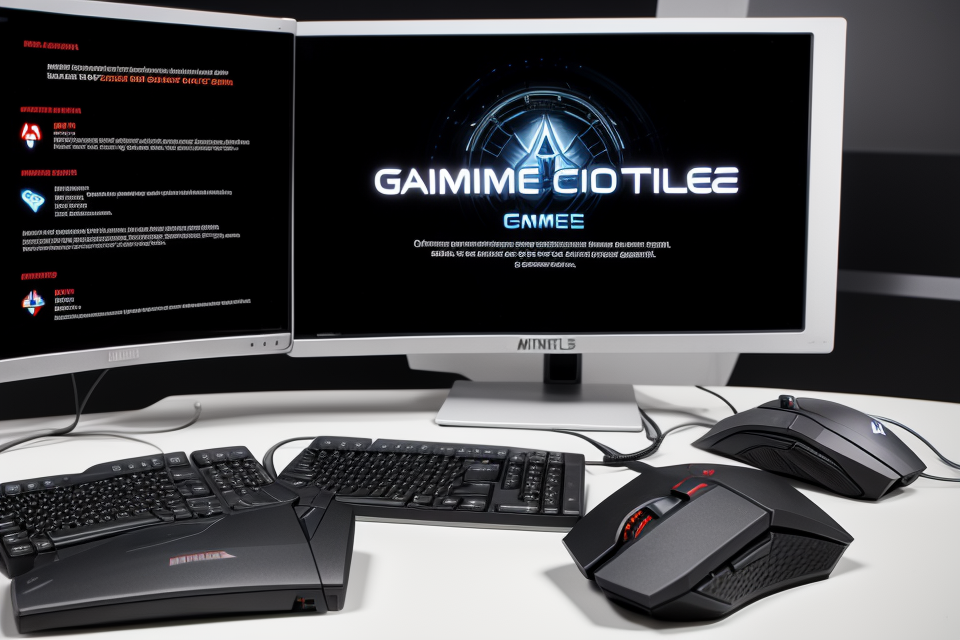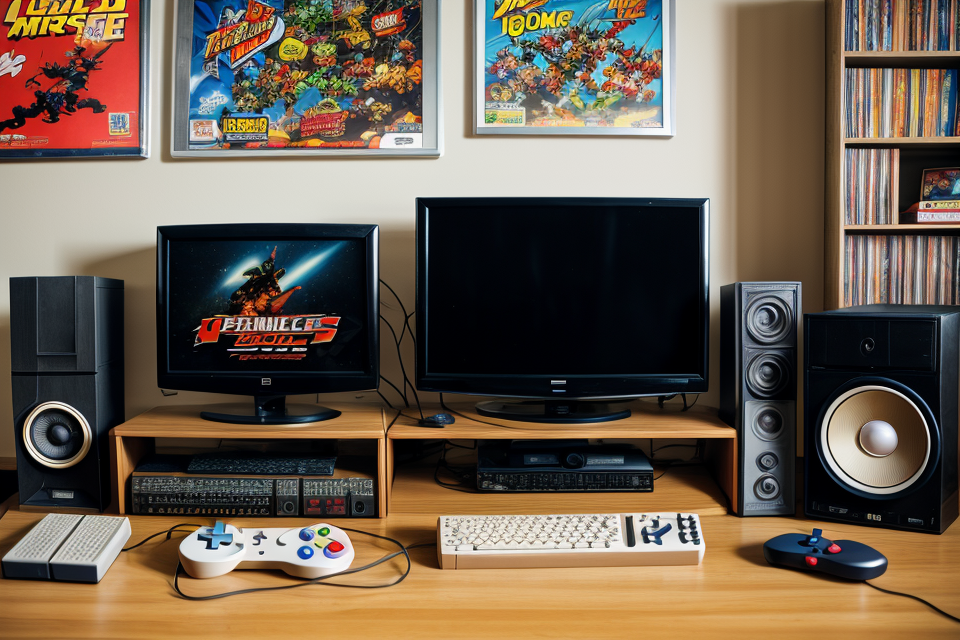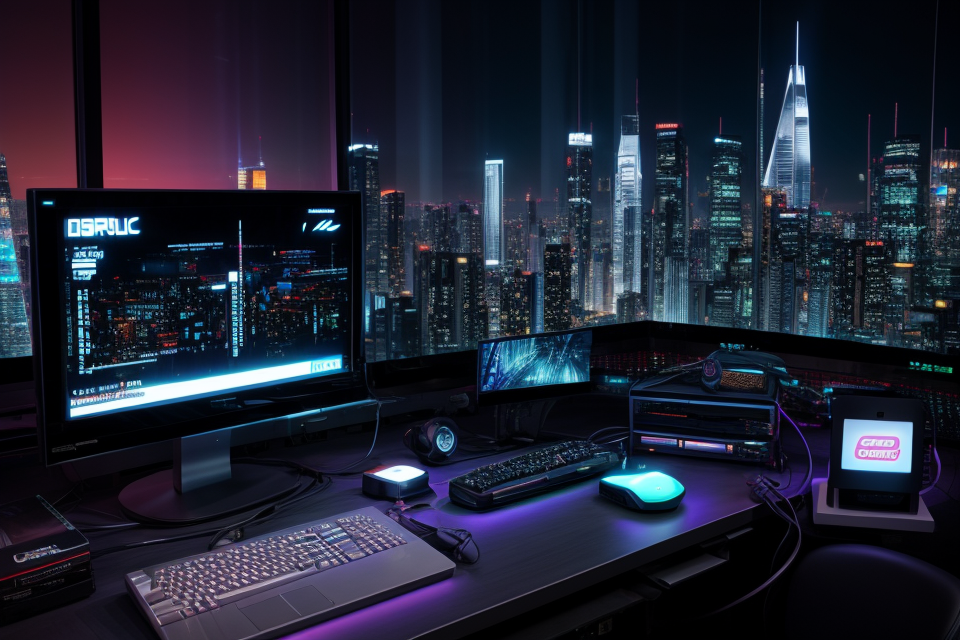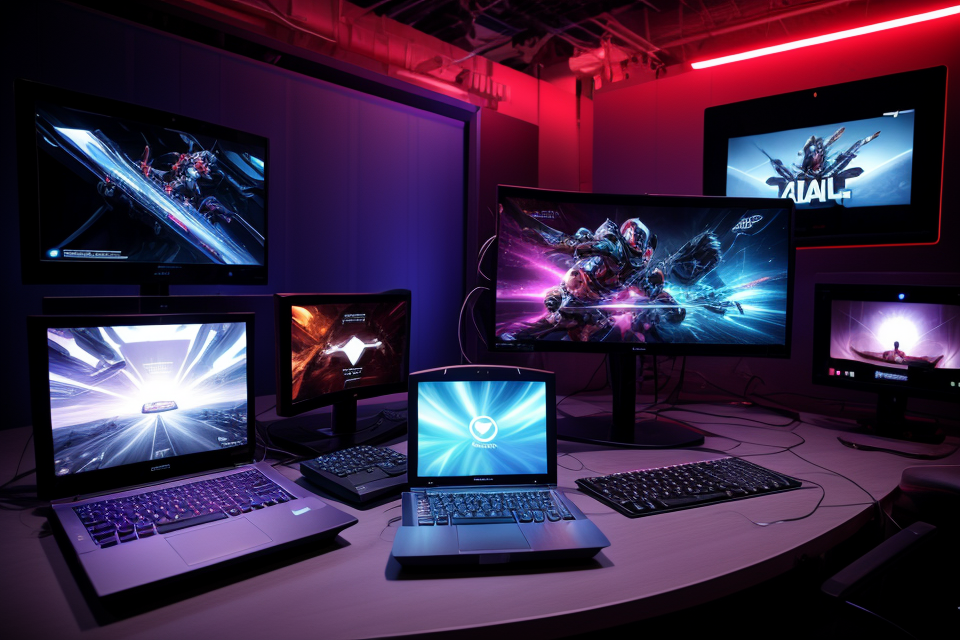
Are you eager to play the latest game on your PC but unsure if it’s compatible with your system? Worry no more! This guide will walk you through the steps to determine whether your PC can handle the game you’re eager to play. From checking the minimum system requirements to running a compatibility test, we’ve got you covered. Get ready to unleash the gamer within and discover if your PC is up to the task!
Understanding Game Compatibility
What is game compatibility?
- Definition of game compatibility
Game compatibility refers to the ability of a video game to run smoothly on a particular device or operating system. It is determined by the hardware and software specifications of the device and the requirements of the game.
- Why it matters
Game compatibility is crucial because it determines whether a game will run smoothly on a particular device or not. If a game is not compatible with a device, it may not run at all or may run poorly, leading to a frustrating gaming experience. Therefore, it is essential to check the compatibility of a game with a device before purchasing or downloading it.
Factors affecting game compatibility
When it comes to playing games on a PC, several factors can affect the compatibility of the game. Here are some of the most important factors to consider:
- Hardware specifications: The hardware specifications of a PC can significantly impact the compatibility of a game. This includes the CPU, GPU, RAM, and storage. If a game requires a high-end GPU or a lot of RAM, it may not be compatible with an older PC that has lower specifications.
- Operating system: The operating system of a PC can also affect the compatibility of a game. Some games may only be compatible with certain versions of an operating system, such as Windows 10 or macOS. If a PC is running an older version of an operating system, it may not be able to run certain games.
- Game requirements: The game requirements, such as the minimum and recommended specifications, can also impact compatibility. If a game has high requirements, it may not be compatible with a PC that does not meet those requirements. Additionally, some games may require specific controllers or other hardware that may not be compatible with all PCs.
In order to determine whether a game is compatible with a particular PC, it is important to carefully review the game’s system requirements and compare them to the hardware specifications of the PC. It may also be helpful to research the experiences of other players who have tried to run the game on similar hardware.
Checking Game Compatibility
Method 1: Checking the game’s system requirements
Before diving into the process of checking game compatibility, it is essential to understand what system requirements are. System requirements refer to the minimum specifications that a computer must meet to run a particular game. These requirements are typically listed by the game’s developer or publisher.
Locating the system requirements
The first step in checking game compatibility is to locate the system requirements for the game you wish to play. These requirements can usually be found on the game’s official website, the developer’s website, or the platform’s store page. They may also be listed on gaming websites or forums that provide information about the game.
Understanding the requirements
Once you have located the system requirements, it is important to understand what each requirement means. For example, the requirement for a certain processor speed may indicate that the game will not run smoothly on a computer with a slower processor. Understanding the requirements will help you determine whether your PC meets the minimum specifications needed to run the game.
Comparing them to your PC’s specifications
After locating and understanding the system requirements, the next step is to compare them to your PC’s specifications. This can be done by checking the specifications of your computer’s hardware, such as the processor, memory, graphics card, and storage. You can find this information by checking your computer’s settings or by checking the specifications of your computer’s manufacturer.
It is important to note that meeting the minimum system requirements does not necessarily mean that the game will run smoothly on your computer. The game’s performance may also depend on other factors, such as the quality of your computer’s hardware or the number of other programs running on your computer. Therefore, it is always a good idea to check the game’s performance on your computer before purchasing it.
Method 2: Using online compatibility tools
There are various online compatibility tools available that can help you determine whether a game is compatible with your PC. Some examples of these tools include Can You Run It, System Requirements Lab, and GeForce Experience.
Can You Run It is a free tool that provides a quick assessment of a game’s compatibility with your PC. To use it, simply enter the name of the game and your PC’s specifications, and the tool will provide you with a detailed report on whether your PC meets the game’s system requirements.
System Requirements Lab is another useful tool that allows you to check the compatibility of a game with your PC. It provides detailed information on the minimum and recommended system requirements for the game, as well as a performance analysis of your PC.
GeForce Experience is a tool specifically designed for NVIDIA graphics card users. It automatically optimizes the performance of games and other graphics-intensive applications by using pre-configured settings that are tailored to your PC’s specifications. Additionally, it provides a quick and easy way to check the compatibility of a game with your PC.
To use any of these tools, simply visit their respective websites and enter the name of the game you want to check. The tool will then provide you with a detailed report on whether your PC meets the game’s system requirements, as well as suggestions on how to optimize the game’s performance on your PC.
Using online compatibility tools has several advantages. They are easy to use and provide quick and accurate results. Additionally, they can help you optimize the performance of games on your PC by providing recommendations on how to adjust your PC’s settings. However, it is important to note that these tools may not always be 100% accurate, and it is always a good idea to double-check the game’s system requirements and make any necessary adjustments to your PC’s settings.
Method 3: Installing the game and checking for errors
Downloading or purchasing the game
Once you have identified the game you want to play on your PC, the next step is to download or purchase the game. Most games can be downloaded from online marketplaces such as Steam, GOG, or the Xbox Game Pass. If you prefer to purchase the game physically, you can do so from a gaming store or online retailer.
Installing it
After you have downloaded or purchased the game, the next step is to install it on your PC. The installation process will vary depending on the game and the platform you are using. In general, you will need to locate the installation file, which may be provided as a digital download or a physical disc, and follow the on-screen instructions to install the game.
Checking for errors or issues during gameplay
Once the game is installed, the next step is to launch it and check for any errors or issues during gameplay. If you encounter any errors or issues, you may need to troubleshoot them before you can play the game. Common errors include graphics card errors, audio errors, and game save errors. You can usually find information on how to troubleshoot these errors by searching online forums or the game’s official support website.
It is important to note that even if a game is compatible with your PC, you may still encounter errors or issues during gameplay. Therefore, it is always a good idea to check for errors or issues during the gameplay and troubleshoot them as needed.
Ensuring a Smooth Gaming Experience
Upgrading your PC’s hardware
When it comes to playing games on your PC, having the right hardware is crucial for a smooth gaming experience. If your PC’s hardware does not meet the minimum requirements for a particular game, you may experience lag, stuttering, or other performance issues. In such cases, upgrading your PC’s hardware can help improve your gaming experience.
Identifying the necessary upgrades
The first step in upgrading your PC’s hardware is to identify the necessary upgrades. You can do this by checking the system requirements for the game you want to play. The system requirements will typically include the minimum and recommended specifications for the game, including the CPU, GPU, RAM, and storage.
If your PC does not meet the minimum requirements, you will need to upgrade your hardware to meet the recommended specifications. However, if your PC already meets the recommended specifications, you may still experience performance issues due to other factors, such as overheating or software issues.
How to upgrade
Once you have identified the necessary upgrades, the next step is to upgrade your PC’s hardware. There are several ways to upgrade your PC’s hardware, including:
- Upgrading your CPU or GPU: This involves replacing your current CPU or GPU with a newer, more powerful model. This can be a complex process and may require professional assistance.
- Upgrading your RAM: This involves adding more RAM to your PC. This is a relatively simple process that can be done by anyone with basic computer knowledge.
- Upgrading your storage: This involves replacing your current storage device with a larger, faster model. This can also be a relatively simple process, but may require some technical knowledge.
Benefits of upgrading
Upgrading your PC’s hardware can provide several benefits, including:
- Improved performance: Upgrading your hardware can help improve your PC’s performance, allowing you to play games at higher settings and resolutions.
- Increased longevity: Upgrading your hardware can help extend the lifespan of your PC, allowing you to continue using it for gaming and other tasks.
- Enhanced gaming experience: Upgrading your hardware can help enhance your gaming experience, providing smoother frame rates, better graphics, and more immersive gameplay.
Overall, upgrading your PC’s hardware can be a worthwhile investment if you want to improve your gaming experience. By identifying the necessary upgrades, following the steps to upgrade your hardware, and enjoying the benefits of improved performance and enhanced gaming experience, you can ensure a smooth gaming experience on your PC.
Optimizing your PC’s settings
When it comes to playing games on your PC, having the right settings can make all the difference in the world. Whether you’re playing a demanding game like Cyberpunk 2077 or a more casual game like Minecraft, optimizing your PC’s settings can help ensure a smooth gaming experience. In this section, we’ll take a closer look at how to optimize your PC’s settings for gaming.
Tips for optimizing settings
- Adjust the graphics settings: Many games have different graphics settings that can be adjusted to improve performance. Lowering the resolution, turning off anti-aliasing, and reducing the number of shadows can all help improve performance.
- Turn off unnecessary programs: Running too many programs at the same time can slow down your PC. Close any programs that you’re not using while you’re playing a game.
- Check your power settings: Your PC’s power settings can also affect its performance. Make sure that your power settings are set to “High Performance” or “High Power”.
- Disable background updates: Windows updates can also slow down your PC. Make sure that your background updates are disabled while you’re playing a game.
How to optimize settings
- Open the graphics settings for the game you want to play.
- Adjust the settings as needed. For example, you might want to lower the resolution or turn off anti-aliasing.
- Save the changes and exit the settings menu.
- Close any unnecessary programs that are running on your PC.
- Check your power settings and make sure they are set to “High Performance” or “High Power”.
- Disable any background updates that might be running on your PC.
Benefits of optimizing settings
By optimizing your PC’s settings, you can help ensure a smooth gaming experience. This can help reduce lag and stuttering, which can be frustrating for gamers. Additionally, optimizing your settings can help improve your frame rate, which can make your game look smoother and more responsive. By taking the time to optimize your settings, you can improve your overall gaming experience and enjoy your games to the fullest.
Troubleshooting common issues
Gaming on a PC can be a fantastic experience, but sometimes issues can arise that can ruin the fun. This section will provide a guide on how to troubleshoot common issues that may occur while playing games on a PC.
Identifying common issues
The first step in troubleshooting issues is to identify what the problem is. Common issues that may occur while playing games on a PC include:
- FPS drops
- Crashes
- Graphical glitches
- Sound issues
- Control issues
How to troubleshoot issues
Once the issue has been identified, there are several steps that can be taken to troubleshoot the problem. These include:
- Checking system requirements: Ensure that the game is compatible with the PC’s hardware specifications.
- Updating drivers: Updating graphics and sound drivers can fix compatibility issues.
- Adjusting settings: Lowering graphics settings or closing background applications can improve performance.
- Disabling hardware acceleration: Hardware acceleration can cause graphical glitches and should be disabled if necessary.
- Checking for malware: Malware can cause performance issues and should be removed if detected.
Preventing issues from occurring
To prevent issues from occurring in the future, there are several steps that can be taken. These include:
- Updating PC: Regularly updating the PC’s operating system and drivers can improve performance and prevent issues.
- Closing background applications: Closing background applications can free up resources and improve performance.
- Using a gaming PC: Using a PC specifically designed for gaming can ensure that the game runs smoothly.
- Checking system specifications: Checking that the game’s system requirements are met before purchasing it can prevent issues from occurring.
By following these steps, gamers can ensure a smooth gaming experience and prevent issues from occurring.
Making Informed Decisions
Factors to consider when purchasing games
When purchasing games, there are several factors to consider in order to make an informed decision. These factors include budget, genre, and system requirements.
Budget is an important factor to consider when purchasing games. The cost of a game can vary greatly, and it is important to set a budget before making a purchase. It is also important to consider whether the game is worth the price tag. Some games may be overpriced, while others may be underpriced. It is important to do research and compare prices before making a purchase.
Genre is another important factor to consider when purchasing games. Different genres appeal to different people, and it is important to choose a game that fits your interests. For example, if you enjoy action games, you may want to consider purchasing a game in the action genre. If you enjoy role-playing games, you may want to consider purchasing a game in the role-playing genre.
System requirements are also an important factor to consider when purchasing games. It is important to ensure that the game is compatible with your computer’s hardware. This includes the operating system, processor, memory, and graphics card. If your computer does not meet the minimum system requirements, the game may not run properly. It is important to check the system requirements before making a purchase to ensure that the game will be compatible with your computer.
Sources for game compatibility information
When it comes to determining whether a particular game is compatible with your PC, there are several sources of information that you can turn to for guidance. Here are some of the most reliable sources of game compatibility information:
- Game Developer’s Website: The game developer’s website is perhaps the most reliable source of information when it comes to determining whether a particular game is compatible with your PC. The developer’s website will typically provide a list of system requirements for the game, including the minimum and recommended specifications for running the game smoothly. You can use this information to determine whether your PC meets the minimum requirements for running the game, and whether you need to upgrade any of your hardware to meet the recommended specifications.
- Online Gaming Forums: Online gaming forums are a great resource for gamers who are looking for advice and guidance on a wide range of topics, including game compatibility. These forums are often populated by experienced gamers who have a wealth of knowledge and experience when it comes to PC gaming. You can ask questions, share your own experiences, and get advice from other gamers who may have faced similar issues in the past.
- Gaming Websites and Blogs: There are many websites and blogs that are dedicated to PC gaming, and these can be a great source of information when it comes to game compatibility. Many of these websites and blogs will provide reviews and ratings of different games, along with information on the system requirements for running the game. You can use this information to determine whether a particular game is compatible with your PC, and to get a sense of how well the game is likely to run on your hardware.
Overall, these sources of information can help you make informed decisions when it comes to choosing which games to play on your PC, and can help you ensure that you have the right hardware and software to run the games you want to play.
FAQs
1. How do I know if my PC can run a particular game?
To determine if your PC can run a particular game, you can check the game’s system requirements. These requirements can usually be found on the game’s official website or in the game’s manual. Look for the minimum and recommended specifications, such as the CPU, GPU, RAM, and operating system. If your PC meets or exceeds these requirements, you should be able to play the game.
2. What happens if my PC doesn’t meet the minimum requirements for a game?
If your PC doesn’t meet the minimum requirements for a game, you may experience performance issues, such as low framerates, stuttering, or even crashes. The game may be unplayable or have a lower quality setting. In some cases, the game may still run, but you may encounter frequent bugs and glitches. It’s always best to check the system requirements before purchasing a game to ensure that your PC can handle it.
3. How can I check if my PC meets the system requirements for a game?
To check if your PC meets the system requirements for a game, you can use a system information tool, such as CPU-Z or HWiNFO. These tools will give you detailed information about your PC’s hardware, including the CPU, GPU, RAM, and operating system. You can then compare this information to the system requirements for the game to see if your PC meets the minimum and recommended specifications.
4. Can I upgrade my PC to play games that I can’t currently run?
If your PC doesn’t meet the system requirements for a particular game, you may be able to upgrade your hardware to play it. Upgrading your CPU, GPU, or RAM can significantly improve your PC’s gaming performance. However, keep in mind that upgrading can be expensive, and it may not always be necessary. If your PC is already close to meeting the recommended specifications, you may not see a significant improvement in performance with an upgrade.
5. What should I do if my PC doesn’t meet the recommended requirements for a game?
If your PC doesn’t meet the recommended requirements for a game, you may still be able to play it, but you may experience performance issues or lower quality settings. In this case, you can try lowering the graphics settings or using a lower resolution to improve performance. You can also try overclocking your CPU or GPU to squeeze out a little more performance. However, if the game is still unplayable, it may be best to wait for a hardware upgrade or consider purchasing a new gaming PC.


